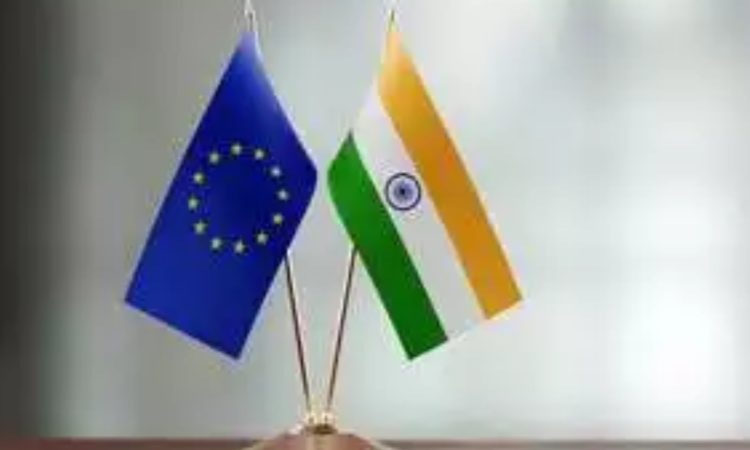
India and the European Union (EU) made a lot of progress on the key issues surrounding the propsoed free trade agreement between them in the last round of negotiations in late June and the next round is expected to be held in late September, a senior official said.
In the latest round, discussions were held on all the 21 chapters or policy areas covered by the FTA with the aim of resolving divergences, joint secretary in the department of commerce Darpan Jain said.
“Progress was made in a number of chapters in terms of finding landing zones, especially on government procurement, digital trade, technical barriers to trade, and goods market

India and the 27-nation bloc resumed negotiations on the FTA on June 17 2022 after a gap of over eight years. First attempt at FTA with the EU was made in 2007 and after many rounds of discussions the progress stalled in 2013 due to differences on issues of tariffs on automobiles, wines and spirits and freer movement of professionals. Brexit (exit of UK from EU) further complicated matters. The proposal for FTA was drawn afresh and discussions began again.
The EU is the biggest export market for India after the US. In 2023-24, exports to the EU stood at $ 75.9 billion, which was 1.4% more than 2022-23, even as overall exports faltered. Imports from the EU last financial year stood at $ 59.3 billion, which were 2.7% lower than in 2022-23.
On FTA negotiations with the UK, another official said that there is a change of government in that country and they will look at the current positions. “There is an eagerness on their part to do this deal with India. They are very positive.”
Britain’s newly-elected Prime Minister Keir Starmer spoke to Prime Minister Narendra Modi
The India-UK FTA has 26 chapters or policy areas and the schedules in FTA deal with tariffs which each side will impose on goods from other countries under the agreement. So far India and Uk have held 13 rounds of negotiations on the FTA and the 14th round which started in January is in progress.
The policy areas covered by FTA are Intellectual Property, Government Procurement, Sanitary and Phytosanitary Measures, Technical Barriers to Trade, Competition, Rules of Origin, Trade Facilitation, Customs Cooperation, Small and Medium-Sized Enterprises, Trade and Sustainable Development, Labour, Gender, Digital Trade, Dispute Settlement, General Provisions and Transparency.
Experts say that while both sides are committed to the deal there could be adjustments in the view of Labour’s views on immigration and dependence on foreign workers. Key Indian demand in the services negotiations is greater access to Indian professionals to the UK market. The UK is seeking a significant cut in import duties on goods such as scotch whiskey, electric vehicles
UK is India’s 16th largest trading partner with a total goods exchange of $ 21.3 billion dollars in the last financial year. India’s exports to the UK grew 13.3% to $ 12.9 billion while imports fell 6% to $ 8.4 billion.
Along with the FTA, India and the UK are also negotiating a Bilateral Investment Treaty. India and the UK are aiming to sign the investment agreement along with the FTA.
The UK is the sixth largest investor in India between April 2000 and March 2024. Its share in total FDI during the period was 5.17% of the total of $ 35 billion. For Indian investors the UK is the fifth biggest destination. Between 2000 and 2024 outbound FDI from India to the UK stood at $ 19 billion.






